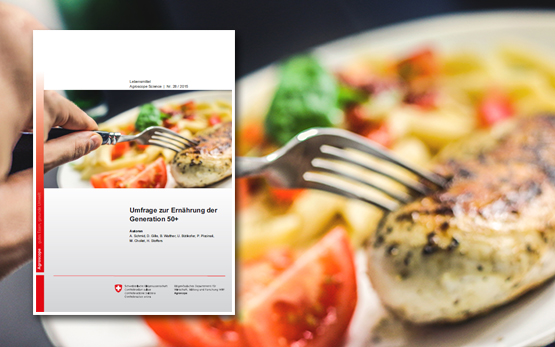Ingenhoff J.-E., Mühlemann M., Ackermann-Gäumann R., Moor D., Berger T.
Risk assessment of alimentary transmission of tick-borne encephalitis viruses from goats to humans by means of milk and milk products in alpine regions of Switzerland.
In: IDF International Cheese Science and Technology Symposium, June 7, 9 and 11, 2021. 07.06., Hrsg. IDF, IDF, virtual (Quebec). 2021.
Widmer J., Jäger M. L., Berger T., Egger C.
Somatic cell count and differentiation in raw milk using flow cytometry.
In: 25.01., Hrsg. Agroscope, Liebefeld - Agroscope. 2021.
Schwendimann L., Merda D., Berger T., Denayer S., Feraudet Tarisse C., Kläui A., Messio S., Mistou M.Y., Nia Y., Hennekinne J.A., Graber H. U.
Staphylococcal enterotoxin gene cluster: Prediction of enterotoxin (SEG and SEI) production and of the source of food poisoning based on vSaβ typing.
Applied and Environmental Microbiology, 87, (5), 2020, 1-15.
Ingenhoff J.-E., Berger T., Mühlemann M.
Phthalate in der Milchwirtschaft: Problematische Weichmacher in Milch und Milchprodukten vermeiden.
Hrsg. Agroscope, Bern. Merkblatt Nr. 115, 2020, 4 S.
weitere Sprachen: französisch
Ingenhoff J.-E., Mühlemann M., Ackermann-Gäumann R., Moor D., Berger T.
Risk assessment of the alimentary transmission of tick-borne encephalitis viruses from goats to humans by milk and milk products in Swiss alpine regions.
Archiv für Lebensmittelhygiene, 71, (5), 2020, 110-114.
Schwendimann L., Berger T., Graber H. U., Meier S., Hummerjohann J., Jakob E.
Growth of Staphylococcus aureus, staphylococcal enterotoxin formation, and the effect of scalding temperature during the production of Alpine cheese in a laboratory cheese-making model.
Journal of Food Protection, 83, (10), 2020, 1822-1828.
Berger T., Fritsch L., Imhof R., Jakob E., Stanke T., Romanò A.
Erfahrungen aus der Listerienberatung - Kolloquium vom 29. August 2019.
Agroscope Transfer, 295, 2019, 1-13.
weitere Sprachen: französisch | englisch
Schwendimann L., Jakob E., Weik D., Graber H. U., Bachmann H.-P., Berger T.
Effects of scalding temperature on the growth of Staphylococcus aureus and the formation of enterotoxins in the production of alpine hard cheese.
In: International Scientific Conference on Raw Milk. 24 October, Valencia, Spain. 2019, 1.
Egger C., Brügger C., Widmer J., Berger T.
ANTOINETTE - DNA and antibody stained total and differential somatic cell counting in milk using flow cytometry.
In: Analytica conference. 21 March, Hrsg. AEOS, Roma. 2019, 1-18.
Berger T., Luginbühl W.
Calculation model to compare different proficiency tests – Modello di calcolo per la comparazione dei proficiency tests.
In: Analytica conference. 21 March, Hrsg. AEOS, Roma. 2019, 1-15.
Maurer J., Wechsler D., Irmler S., Berger T.
Vermeidung von persistenten Kontaminationen in Melkanlagen.
Agrarforschung Schweiz, 10, (3), 2019, 116-121.
weitere Sprachen: französisch
Egger C., Brügger C., Spahni A., Berger T., Boitelle C., Ghezzal H.
Validation of Alkaline Phosphatase Fluorometric Microwell Assay.
In: Analytical Week ISO/IDF. 23 April, Dublin. 2018, 1-14.
Tanneberger F., Tegetmeyer C., Busse S., Barthelmes A., Shumka S., Moles Mariné A., Jenderedjian K., Steiner G.M., Essl F., Etzold J., Mendes C., Kozulin A., Frankard P., Milanović D., Ganeva A. und weitere
The peatland map of Europe.
Mires and Peat, 19, (22), 2017, 1-17.
Schaeren W., Berger T.
Application of a unified European conversion factor for the transformation of Bactoscan FC values.
Agroscope Science, 36, 2016, 1-12.
Egger L., Amrein R., Brügger C., Goy D., Winkler H., Messerli-Hostettler B., Spahni A., Berger T.
Alkalische Phosphatase Aktivität in Käse als Indikator für Milch-Pasteurisation.
FOOD-Lab International, 2, 2016, 22-24.
Schmid M., Presi P., Schorer M., Berger T., Breidenbach E.
Risk factors involved in the contamination of Swiss cheeses by Listeria monocytogenes and coagulase-positive staphylococci.
Agroscope Science, 37, 2016, 1-12.
Berger T., Luginbühl W.
Probabilistic comparison and assessment of proficiency testing schemes and laboratories in the somatic cell count of raw milk.
Accreditation and Quality Assurance, 3, (21), 2016, 175-183.
Wittwer M., Berger T., Jakob E.
Anforderungen an Fruchtbeigaben.
Alimenta, 06, 2016, 26-27.
Egger L., Brügger C., Ghezzal H., Berger T.
Current status in the development of a microwell method for the analysis of alkaline phosphatase activity.
In: Workshop EURL. 7– 9 octobre, Hrsg. Anses, Maison-Alfort, Paris. 2015, 1-20.
Bühlmann G., Schaeren W., Berger T., Hummerjohann J.
Gerätevergleich Bactoscan 8000, Bactoscan FC und Bactocount. Auswertung der Untersuchungen August und September 2006: [Comparison of the analytical instruments Bactoscan 8000, Bactoscan FC and Bactocount. Analysis of the results for August and September 2006].
Agroscope Science, 27, 2015, 1-40.






